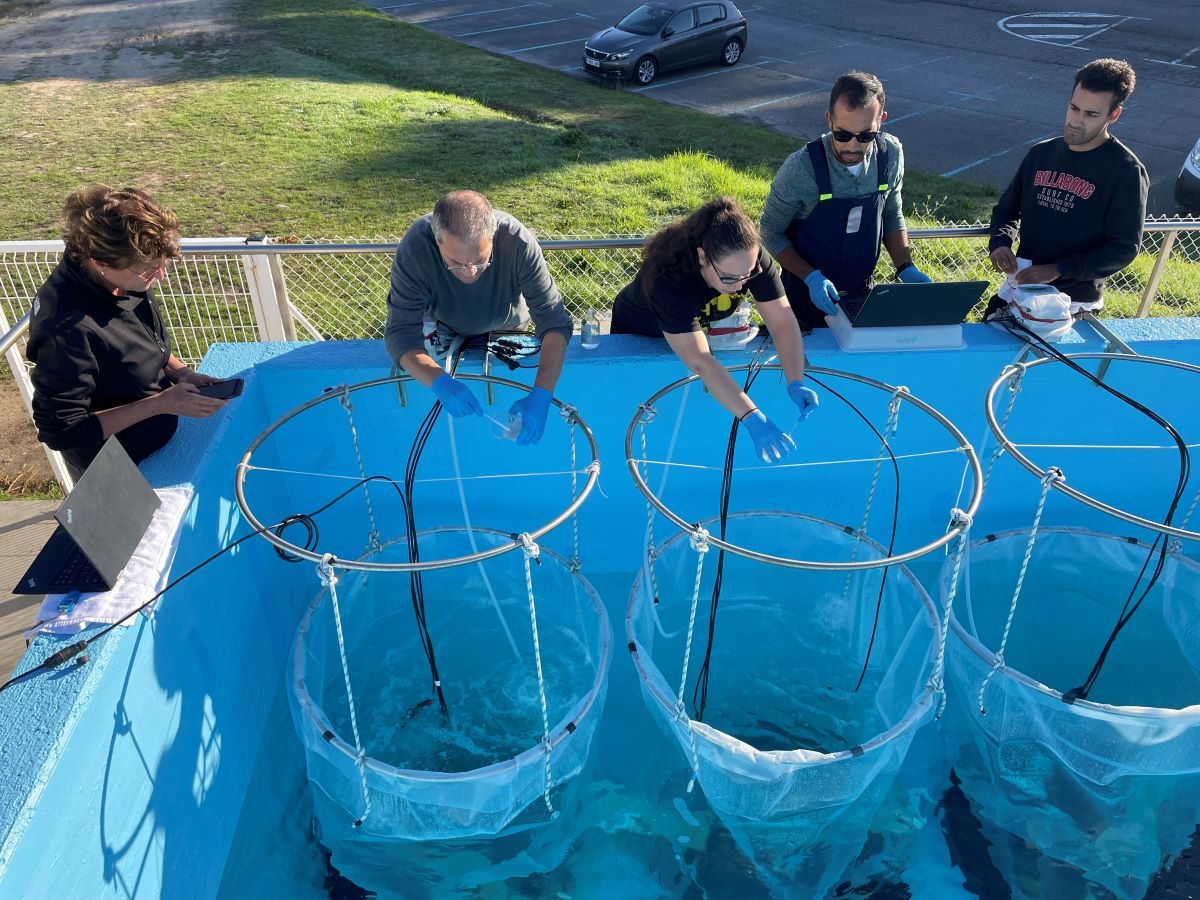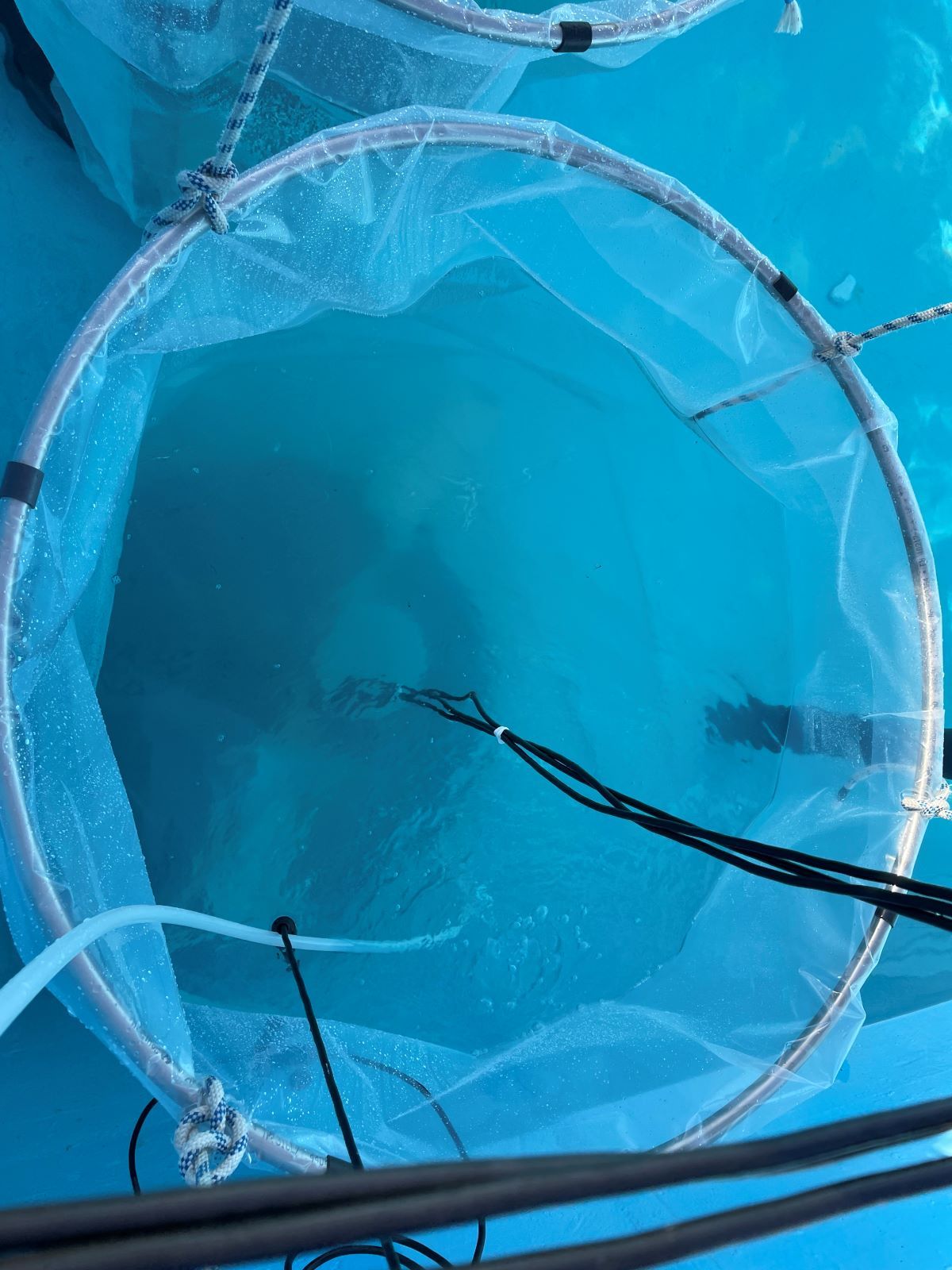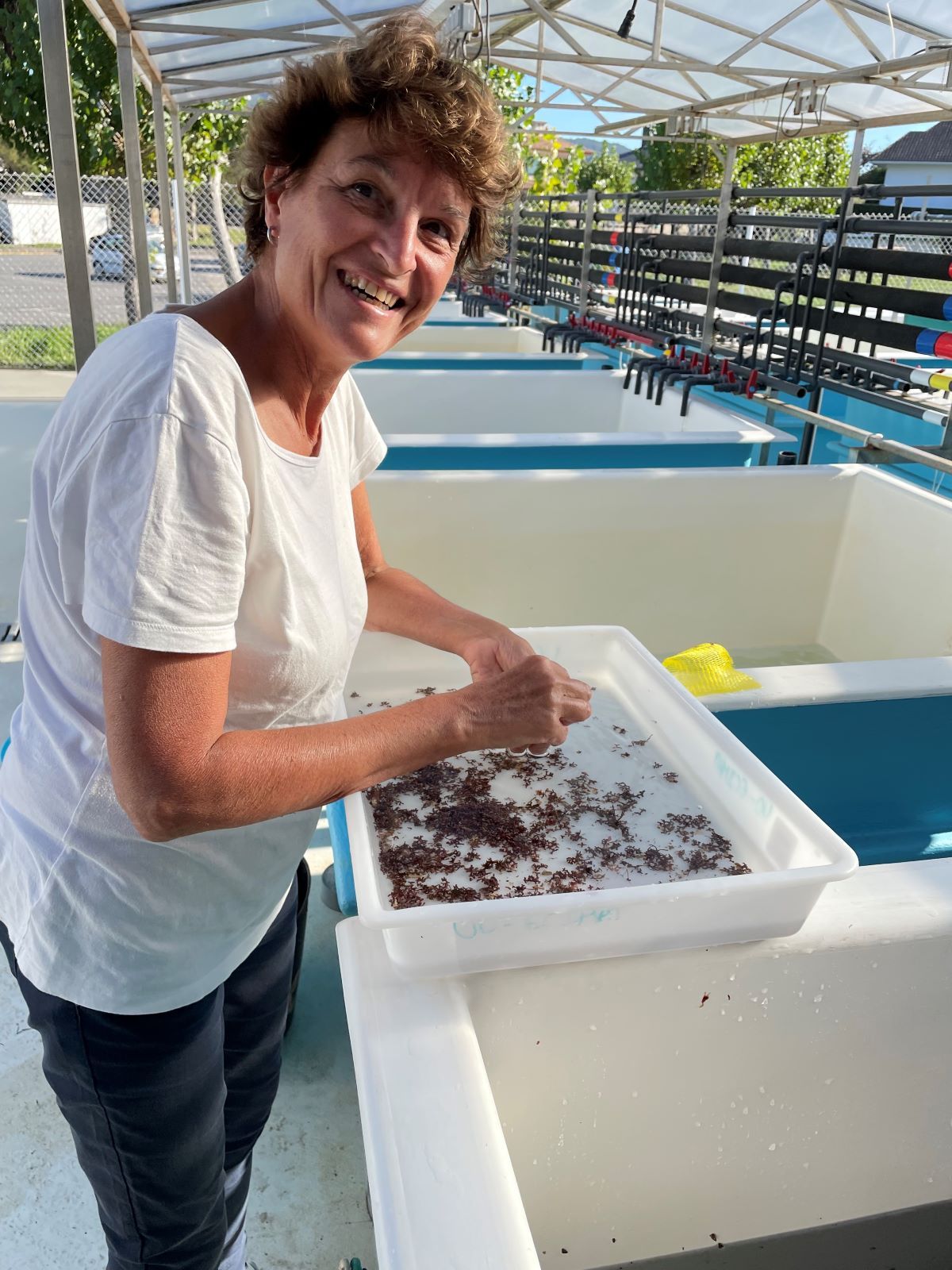Facilities
Transnational Access
Metadata & Data
Papers & Reports
Knowledge Base
Testing alkalinisation as a potential mitigation tool for ocean acidification
9th February 2023
As atmospheric CO2 concentrations keep on rising, in spite of mitigation efforts, negative emission technologies are being developed to limit global warming. One of the techniques proposed for this aim is ocean liming, which allows the active removal of CO2 from the atmosphere, contrasting ocean acidification and being expected to favour bio-calcifiers. Slaked lime can be massively discharged within the wake of ships as a side activity of normal maritime traffic. Nevertheless, the effect on marine organisms is still little known; local pH peaks may have temporary and local effects both on plankton and pelagic ecosystems, that can lead to major disruptions. Additionally, ocean liming may induce CaCO3 precipitation during slaked lime dissolution, which might reduce the efficiency of CO2 uptake. Thus, further research is needed to determine the existence of possible negative effects, as well as to determine the concentrations that could be added for CO2 removal without affecting the marine communities.
In October 2022, an experiment to assess the effect of alkalinisation on the plankton community and calcareous algae (maerl) was conducted in the frame of the AQUACOSM-plus Transnational Access (TA) program. This experiment, named OLCAPP, was conducted in the ECIMAT mesocosm facilities, belonging to the Marine Research Centre at the University of Vigo (CIM-Uvigo), in the NW coast of Spain. OLCAPP was led by Prof. Daniela Basso, from the University of Milano-Bicocca, in collaboration with three other researchers of her team, including Politecnico di Milano and CNR-IBF in Pisa (all of them funded by the TA program) and another 4 local researchers from the Marine Research Centre at the University of Vigo (CIM-Uvigo).

The aim of OLCAPP was to determine the short- and medium-term responses of DOM (important C pool for heterotrophs), plankton community metabolism, and calcareous primary producers, to repeated alteration of pH and carbonate equilibrium, in a scenario of repeated liming to simulate dispersal in the wake of cruising ships. In this experiment were assessed: changes in DOM composition; primary production, photosynthetic efficiency and a potential shift in phytoplankton associations; the response of calcareous red algae (maerl) to alkalinisation and potential precipitation of carbonate crystals induced by the treatments. During the experiments, the slaked lime dissolution kinetics (alkalinity, pH spikes, DIC) were also monitored and modelled.

The results of this experiment will be crucial to understand the processes taking place in the water column after the liming dispersal, and its effects on the marine organisms and to determine if this approach could be an effective tool for active CO2 removal. After this test in a highly productive region, such as the upwelling system in Ría de Vigo (NW Spain), more tests are planned in different regions, taking advantage also of the AQUACOSM-plus TA program, to compare the effects on different marine communities.
